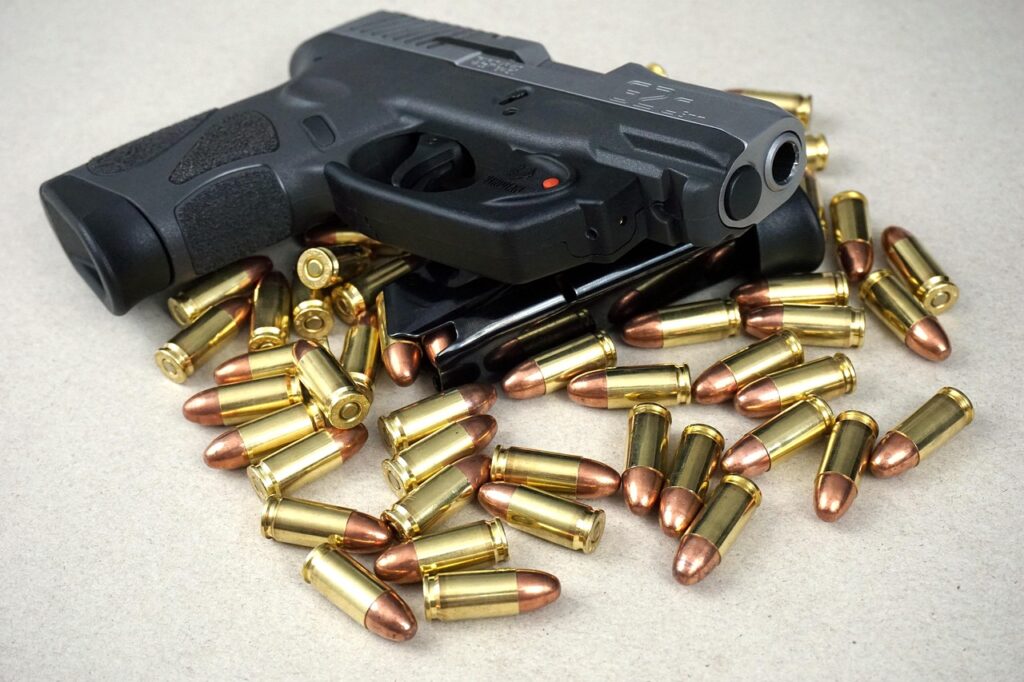
If you’re shopping for a budget-friendly 9mm pistol that can serve at the range, for home defense, or as an entry-level carry option, the Taurus G3 and the Ruger Security-9 are two names you’ll see again and again. Both deliver modern features at accessible prices and both aim to give shooters excellent value without a high-end sticker. That makes a direct comparison useful: they sit in the same segment, but with different design philosophies, controls, and strengths. Below I break down the most important areas — design, ergonomics, controls, shootability, reliability, maintenance, customization, and overall value — to help you decide which one might be best for you.
Design and platform
At a glance the two pistols look like competitors carved from the same category: polymer frame, steel slide, similar barrel lengths and magazine capacities. But their mechanical DNA is different. The Taurus G3 is a modern striker-fired pistol that embraces many of the features shooters expect from contemporary service pistols: a crisp, shorter trigger feel (relative to other budget pieces), a low bore axis to reduce muzzle flip, and a frame sculpted for broad ergonomic appeal. The Ruger Security-9 takes a more conservative approach. It uses a hammer/DAO-ish trigger system (often described as a consistent long pull) and a frame design that emphasizes simplicity and a chunky, secure grip. In short, G3 is modern striker; Security-9 is straightforward, utilitarian, and deliberately uncomplicated.
Size, weight, and capacity
Both pistols typically come in full-size and compact-ish configurations with commonly found barrel lengths around four inches for the full-size models. Magazine capacities for standard full-size variants sit in the mid-teens, making either option suitable for range days and home defense without sacrificing a comfortable grip. Weight is light enough to keep them shootable for extended range sessions but substantial enough to tame recoil with 9mm loads. Practical dimensions make either one compatible with a wide variety of holsters and carry rigs, although you’ll want to try an exact model/variant in your chosen holster before committing to daily carry.
Controls and safety features
A major point of divergence between the two is the user interface and safety setup. The Taurus G3 presents the typical modern striker-fired control layout: a clean trigger profile with an internal striker block and, on many variants, an optional manual safety. It often includes a visual or tactile loaded-chamber indicator and straightforward takedown mechanics. The Ruger Security-9 takes a different angle; its trigger is longer and heavier by design, and it commonly features an external manual thumb safety that many defensive-minded shooters appreciate. If you prefer a short, lighter trigger and quick follow-up shots, you may favor the G3. If you prefer a deliberate long pull and a manual safety you can easily engage, the Security-9 will likely feel right. Both have been designed with basic passive safety layers, but the style of those safety systems very much favors personal preference.
Ergonomics and handling
Ergonomics can’t be fully captured in a spec sheet. The G3 was engineered with a comfortable grip angle and moderate texturing designed to work well for a broad range of hand sizes. Many shooters note that the G3’s grip feels narrower and more pointed to the hand, allowing good trigger reach and natural pointing. The Security-9’s frame tends to present a chunkier, aggressive texture that gives an immediate sense of purchase — especially in hotter loads or fast strings of fire. That textured, beefier feel may appeal to those with larger hands or anyone who prioritizes a very secure hold. If you have smaller hands, the G3 may be easier to manage; if you like a beefy grip, the Security-9 could be the winner. Ultimately, try both if you can; fit is so personal that range time is the only real test.
Sights and sighting options
Both pistols ship with basic but serviceable sights: dovetailed front sight and adjustable or driftable rear sight. OEM sight packages on both are aimed at utility rather than competition, but either platform accepts aftermarket sights and minor upgrades. The Taurus G3 family has wider support for optics-ready slides and threaded-barrel variants in some models, which makes it a bit more versatile for those who want to mount a red dot or suppressor later. The Security-9, while compatible with a growing assortment of accessories and holsters, is somewhat more conservative out of the box when it comes to optics-integration, so if the plan is to go optics-first, check the specific model’s features before buying.
Trigger feel and shootability
Trigger feel has an outsized impact on perceived shootability. The Taurus G3 trigger typically feels shorter and crisper, offering a reset that many find friendly for rapid pairs and quick follow-up shots. That characteristic often translates to faster, more confident strings for shooters comfortable with striker-fired triggers. Ruger’s Security-9 delivers a longer, heavier, and very consistent pull which breeds a sense of safety and predictability for others; the longer pull can act as an internal safety for some users, reducing the likelihood of negligent discharges. Performance-wise, downrange accuracy for both pistols at typical defensive distances is comparable — good fundamentals and quality ammunition will matter more than a marginal difference in trigger type. Still, shootability is subjective: one shooter’s quick-hand is another shooter’s flinch.
Recoil management and muzzle flip
Given similar barrel lengths and weights, both pistols manage recoil well with modern 9mm loads. The G3’s lower bore axis and design focus on minimizing muzzle rise can reward the shooter with slightly quicker follow-up shots and the sensation of less felt recoil. The Security-9’s weight distribution and grip texture do an admirable job at controlling muzzle flip, but the longer trigger pull and different bore axis geometry can change the perceived handling. Bottom line: both are eminently manageable; neither is a punishing experience with standard defensive or practice loads.
Reliability and longevity
For a defensive or primary-use pistol, reliability is paramount. Both manufacturers have tested these designs in their own ways, and user reports generally indicate solid reliability for everyday use with factory ammunition. Ruger’s long-standing reputation in the firearms space gives many buyers added confidence in support, warranty, and parts availability. Taurus has made impressive gains with the G3 platform, righting past reputation concerns through improved quality control on this model line and offering parts and magazines that are easily sourced. With either pistol, normal break-in recommendations apply: run a variety of factory loads for the first few hundred rounds, keep the feed ramp and bore clean, and establish a periodic maintenance regimen.
Maintenance and ease of service
Both platforms field-strip without tools and were designed with uncomplicated maintenance in mind. Replacement parts and magazines are widely available through multiple retailers; aftermarket magazines and service parts exist for both platforms. If you live in an area where you expect to rely on local gunsmiths or dealers for parts, Ruger’s deeper dealer penetration may make some difference. Online ordering levels the playing field for Taurus owners, though, and both companies back their products with warranty service where needed.
Aftermarket and customization
If you plan to customize — sights, holsters, optics, threaded barrels, or slide treatments — the Taurus G3 generally enjoys a broader aftermarket ecosystem, especially for optics-ready variants and accessories that cater to the striker-fired market. Ruger Security-9 accessories are widespread for common needs like holsters, magazines, and minor upgrades, but the platform is a bit less modular for more extensive modifications. If you want to run a red dot or an aggressive aftermarket setup, verify which G3 variant you pick; if you prefer a basic, durable handgun that needs little modification, the Security-9’s conservative design is a strength.
Value for money
Value isn’t just price; it’s features-for-cost, longevity, and how well the pistol does the job you need it to do. Both pistols undercut many premium-brand alternatives while delivering core capabilities most owners want: solid ergonomics, decent capacity, manageable recoil, and reliable function. The G3 often undercuts competitors on price while bringing modern trimmings and optional features like optics-ready slides or manual safeties on certain variants. The Security-9 sells on the strength of simple, proven function and a manual safety that some buyers specifically want. For a shooter who prioritizes raw modern ergonomics and potential for later upgrades, the G3 is a hard value pickup. For someone who wants a durable, predictable handgun with a straightforward safety layout, the Security-9 is a tremendous bargain.
Who should buy which?
Choose the Taurus G3 if you want a modern striker-fired feel, a shorter trigger with a crisp reset, and a platform that’s friendly to optics and aftermarket upgrades. It’s excellent for shooters who want a contemporary pistol experience without the premium price. Choose the Ruger Security-9 if you prefer a long, consistent trigger pull, value the presence of a positive manual safety, and want a rugged, no-nonsense pistol that’s very easy to use and maintain. The Security-9 is a particularly strong fit for those who prioritize simplicity and a conservative control scheme.
Final thoughts
Neither pistol is a wrong choice — they represent two strong, cost-conscious approaches to the same problem: how to give shooters a reliable, accurate, and safe 9mm without imposing a heavy price tag. Hands-on fit and trigger preference will probably decide most buyers. If possible, try each at a range or borrow one from a friend to get a feel for hand fit, trigger feel, and how sights align with your eyes. Evaluate your intended role for the firearm: practice and range time, concealed or open carry, or home defense. Factor in holster availability and how you plan to accessorize; if optics are in your future, verify if the specific model is optics-ready.
Both the Taurus G3 and the Ruger Security-9 deliver exceptional value and prove you don’t need to spend a fortune to own a capable 9mm. Whether you gravitate to the G3’s modern ergonomics and trigger or the Security-9’s simple, safe, and steady control scheme, you’ll be getting a pistol that stands up to everyday use. If shopping used or comparing street prices, check current availability and handles from multiple dealers to snag the best deal, and consider magazine extras as part of your purchase calculus. For many buyers, this comes down to personal comfort and what feels right in your hands — and that’s something only live fire will truly reveal.


